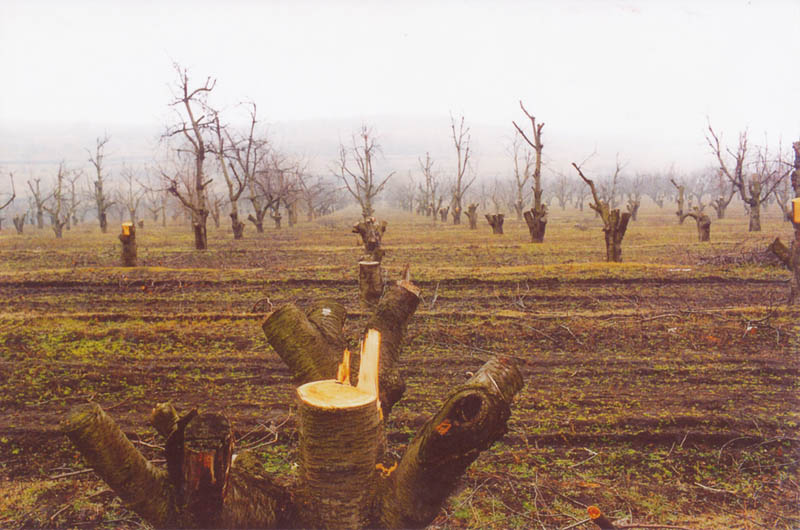On September 12,plump teen sex videos 1970, the Soviet Union landed a robot on the moon. The probe, named Luna 16, drilled into the lunar ground for seven minutes and removed around 100 grams -- just over one-fourth of a pound -- of small moon rocks and fragments from a wide-volcanic plains named the Sea of Fertility. Then, it blasted off back to Earth.
Now, three tiny lunar fragments from the Luna 16 mission are being auctioned to the highest bidder through Sotheby's. The current owner of the little bits of moon, however, remains anonymous.
It may seem odd that human-gathered lunar fragments fell into private hands -- similar to perhaps a prized Picasso or a van Gogh. Indeed, most moon specimens are kept in closely-guarded environs, like most of NASA's 842 pounds of treasured lunar material.
But these profoundly rare moon fragments are legitimately for sale, and they carry considerable significance.
"It becomes more than a natural sample," Robert Pearlman, a space historian who runs the website collectSPACE, said in an interview.
 Original image has been replaced. Credit: Mashable
Original image has been replaced. Credit: Mashable "It becomes an artifact of our space exploration efforts," said Pearlman. "It's a testament, or touchstone -- if you pardon the pun -- to the greatest adventure humankind has ever been on."
The official moon rock auction is set for November 29, and the next owner -- like the current one -- could remain unknown.
"Winning bidders remain anonymous," Hallie Freer, a Sotheby’s press officer, said over the phone.
After Luna 16 returned to Earth with its lunar bounty, the Soviet Union gifted the samples to Nina Ivanovna Koroleva, the widow of the Soviet Union's former space director, Sergei Pavlovich Korolev.
"He’s a key figure in space history -- though he died much too early," said Pearlman.
Korolev's widely-recognized brilliance played a prominent role in igniting the Space Race, a rivalry between the U.S. and Soviet Union.
 Original image has been replaced. Credit: Mashable
Original image has been replaced. Credit: Mashable Korolev got there first.
In 1957, the Soviets rocketed Sputnik -- the first human-made satellite -- into space. Four years later, the Korolev-led Soviet space agency sent the first man, Yuri Gagarin, into space.
But NASA -- buttressed by astronomical federal spending -- famously put people on the moon in the summer of 1969.
SEE ALSO: A woman sued NASA to keep a vial of moon dust. She might have made a huge mistake."Neither we nor the Russians would have reached the moon without him [Korolev] taking the leadership role that he did," said Pearlman.
But Korolev died in 1966. To honor his memory, the Soviet Union took three "soil particles" for the Luna 16 mission, placed them on a robust-looking plaque set behind glass, and gifted the artifact to his window.
But in 1993, these rare pieces of moon left her hands: She contracted Sotheby's to auction off the samples.
 Original image has been replaced. Credit: Mashable
Original image has been replaced. Credit: Mashable The lunar specks fetched a price of $442,500. Now, Sotheby's expects them to go for between $700,000 and $1 million.
In some ways, that's expensive for such tiny moon fragments, totaling about 0.2 grams.
"It has a built-in magnifying glass," noted Pearlman. "It's closer to looking at grains of sand than looking at pebbles."
Yet, to the right bidder, such historically rich extraterrestrial space objects might be priceless.
For 25 years, the whereabouts of the moon rocks haven't been publicly known.
Presumably, a wealthy individual with ample discretionary income bought the Soviet-era plaque. And presumably, the same thing will happen again.
Although, the fragments may not be kept hidden this time.
"What you hope is that someone buys it and wants to display it," said Pearlman, noting that billionaire Ross Perot previously bought a number of Russian artifacts and loaned them to the National Air and Space Museum.
"Private ownership is not necessarily a detriment -- it can be an asset," he added.
 Original image has been replaced. Credit: Mashable
Original image has been replaced. Credit: Mashable But for anyone interested in legally owning human-gathered moon rocks, the looming auction is the only way to do it.
NASA, for instance, has never gifted any space rocks to any individuals -- even its famous astronauts.
Though, of course, these Soviet-era moon fragments may remain inside a dimly-lit private study somewhere, perhaps known to just a handful of people.
"We don’t know who bought it in '93, or who’s selling it now," said Pearlman.
With an Earthling populace that's keen on space exploration, it's likely that whomever is selling these bits of moon will receive a generous return on their lunar investment.
(Editor: {typename type="name"/})
 Amazon CEO tries to sell kids on working on the moon
Amazon CEO tries to sell kids on working on the moon
 Usher's Super Bowl Halftime Show blew up the internet
Usher's Super Bowl Halftime Show blew up the internet
 'Badass' national park flooded with fan mail after fighting Trump on Twitter
'Badass' national park flooded with fan mail after fighting Trump on Twitter
 Time Travel by Cynthia Zarin
Time Travel by Cynthia Zarin
 How to unblock Pornhub for free in Oklahoma
How to unblock Pornhub for free in Oklahoma
Everything Alienware announced at CES 2025
 As CES 2025 innovations roll in, we're keyed into the intersection of product launches. Nvidia kicke
...[Details]
As CES 2025 innovations roll in, we're keyed into the intersection of product launches. Nvidia kicke
...[Details]
Donald Trump just got trolled from the 'first protest in space'
 Space nerds have taken trolling Trump into the stratosphere. On Wednesday, the Autonomous Space Age
...[Details]
Space nerds have taken trolling Trump into the stratosphere. On Wednesday, the Autonomous Space Age
...[Details]
These cities are totally slaying the solar power game
 With the Trump administration targeting various government clean energy programs, we can think of no
...[Details]
With the Trump administration targeting various government clean energy programs, we can think of no
...[Details]
Google's data center raises the stakes in this state's 'water wars'
 Endless emails, map requests, web searches, and everything else we do online requires the use of ene
...[Details]
Endless emails, map requests, web searches, and everything else we do online requires the use of ene
...[Details]
Best early Prime Day deal: Save 40% on the Ember Mug at Amazon
 SAVE 40%:The Ember Mug 2 (14 ounce, white) is on sale at Amazon for $89.99, down from the list price
...[Details]
SAVE 40%:The Ember Mug 2 (14 ounce, white) is on sale at Amazon for $89.99, down from the list price
...[Details]
Out of Step with the Rest of the World: A Conversation with Zheng Zhi by Owen Park
 Out of Step with the Rest of the World: A Conversation with Zheng ZhiBy Owen ParkApril 16, 2025At Wo
...[Details]
Out of Step with the Rest of the World: A Conversation with Zheng ZhiBy Owen ParkApril 16, 2025At Wo
...[Details]
The Enemy Is a Bowl of Soup: On Quino’s Mafalda by Julia Kornberg
 The Enemy Is a Bowl of Soup: On Quino’s MafaldaBy Julia KornbergJune 6, 2025The Review’s ReviewThe c
...[Details]
The Enemy Is a Bowl of Soup: On Quino’s MafaldaBy Julia KornbergJune 6, 2025The Review’s ReviewThe c
...[Details]
See the best 2024 Super Bowl commercials
 An iconic element of the Super Bowl is the creative, fun commercials that debut between the action o
...[Details]
An iconic element of the Super Bowl is the creative, fun commercials that debut between the action o
...[Details]
 Like seemingly every tech company, dating apps are going all-in on AI features. At a time when dater
...[Details]
Like seemingly every tech company, dating apps are going all-in on AI features. At a time when dater
...[Details]
Cathedrals of Solitude: On Pier Vittorio Tondelli by Claudia Durastanti
 Cathedrals of Solitude: On Pier Vittorio TondelliBy Claudia DurastantiMay 30, 2025The Review’s Revie
...[Details]
Cathedrals of Solitude: On Pier Vittorio TondelliBy Claudia DurastantiMay 30, 2025The Review’s Revie
...[Details]
Apple MacBook Air deal: $899 at Best Buy

How to watch Taylor Swift 'The Eras Tour (Taylor's Version)' in 2024

接受PR>=1、BR>=1,流量相当,内容相关类链接。